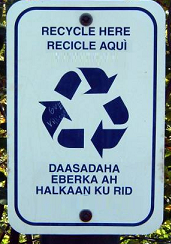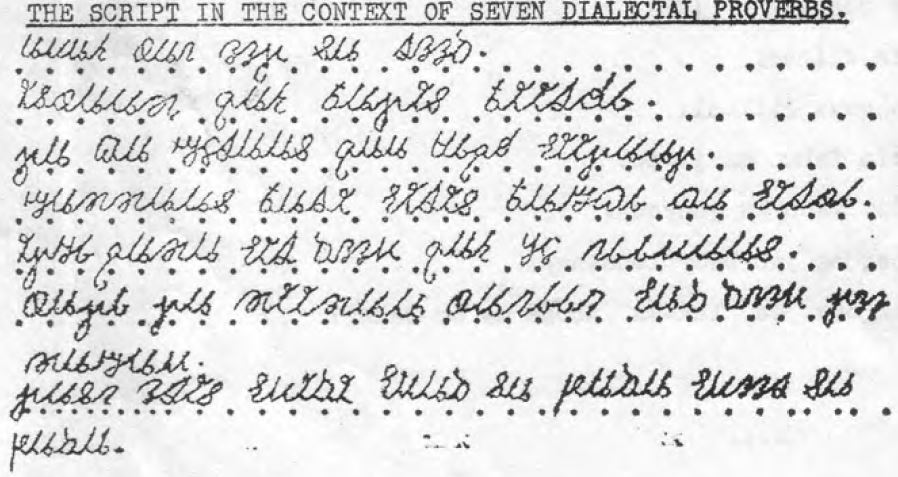|
Osmanya Script
Osmanya (, ), known in Somali as ''Far Soomaali'' (, "Somali writing") and in Arabic as ''al-kitābah al-ʿuthmānīyah'' (; "Osman writing"), is an alphabetic script created to transcribe the Somali language. It was invented by Osman Yusuf Kenadid, the son of Sultan Yusuf Ali Kenadid and brother of Sultan Ali Yusuf Kenadid of the Sultanate of Hobyo. Material written in the script is 'almost non-existent,' so it is difficult to describe its use with certainty. History While Osmanya gained reasonable acceptance for correspondence and bookkeeping at the local level, it met fierce resistance as a national script for several reasons: it was identified with the Majeerteen clan, who supported the Italian colonial government, rather than with the Somali nation as a whole view that has changed somewhat in the 21st century there was opposition to making Somali rather than Arabic the official language of the country, and in addition there was opposition to using any indigenous script rat ... [...More Info...] [...Related Items...] OR: [Wikipedia] [Google] [Baidu] |
Osman Yusuf Kenadid
Osman Yusuf Kenadid (; ; 1889 – 14 August 1972) was a Somalis, Somali poet, writer, teacher and ruler. Born in Ceel Huur in 1889, he went on to create the Osmanya alphabet for writing Somali language, Somali. He died on 31 August 1972 in Mogadishu. Biography Kenadid grew up in the town of Galkayo, situated in north-central present-day Somalia. He served as a leader in the Majeerteen Sultanate of Hobyo and was the son of the polity's founder, Sultan Yusuf Ali Keenadid, Yusuf Ali Kenadid. He is also the father of Yasin Osman Kenadid. Kenadid hails from the Osman Mahmoud, Osman Mahamuud Majeerteen Darod clan. Also a writer, Kenadid published many works on various subjects related to Somali history and science, including textbooks on the Somali language, astronomy, geography and Somali philosophy. He borrowed significantly from the vast ancient Somali cultural repository, working towards a renaissance of this rich past. In the early 20th century many young Somalis felt it was of ... [...More Info...] [...Related Items...] OR: [Wikipedia] [Google] [Baidu] |
Somali Latin Alphabet
The Somali Latin alphabet is an official writing system in the Somalia, Federal Republic of Somalia and its constituent States and regions of Somalia, Federal Member States. It was developed by a number of leading scholars of Somali_language, Somali, including Musa Haji Ismail Galal, B. W. Andrzejewski and Shire Jama Ahmed specifically for transcribing the Somali language, and is based on the Latin script. The Somali Latin alphabet uses all letters of the English Latin alphabet with the exception of ''p'', ''v'' and ''z''. There are no diacritics or other special characters, although it includes three consonant Digraph (orthography), digraphs: DH, KH and SH. Tone is not marked and a word-initial glottal stop is also not shown.H.I. Galaal, pp. 4-11 Capital letters are used for names and at the beginning of a sentence. Form The Somali Latin alphabet is largely orthography, phonemic, with Somali_phonology#Consonants, consonants having a one-to-one Grapheme#Relationship with phoneme ... [...More Info...] [...Related Items...] OR: [Wikipedia] [Google] [Baidu] |
Obsolete Writing Systems
Obsolescence is the process of becoming antiquated, out of date, old-fashioned, no longer in general use, or no longer useful, or the condition of being in such a state. When used in a biological sense, it means imperfect or rudimentary when compared with the corresponding part of other organisms. The international standard IEC 62402:2019 Obsolescence Management defines obsolescence as the "transition from available to unavailable from the manufacturer in accordance with the original specification". Obsolescence frequently occurs because a replacement has become available that has, in sum, more advantages compared to the disadvantages incurred by maintaining or repairing the original. Obsolete also refers to something that is already disused or discarded, or antiquated. Typically, obsolescence is preceded by a gradual decline in popularity. Consequences Driven by rapid technological changes, new components are developed and launched on the market with increasing speed. The resul ... [...More Info...] [...Related Items...] OR: [Wikipedia] [Google] [Baidu] |
Somali Orthography
A number of writing systems have been used to transcribe the Somali language. Of these, the Somali Latin alphabet is the most widely used. It has been the official writing script in Somalia since the Supreme Revolutionary Council (Somalia), Supreme Revolutionary Council formally introduced it in October 1972, and was disseminated through a nationwide Somali Rural Literacy Campaign, rural literacy campaign. Prior to the twentieth century, the Arabic script was used for writing Somali. An extensive literary and administrative corpus exists in Arabic script. It was the main script historically used by the various Somali sultans to keep records. Writing systems developed locally in the twentieth century include the Osmanya alphabet, Osmanya, Borama alphabet, Borama and Kaddare alphabet, Kaddare scripts. Latin script The Somali Latin script, or Somali Latin alphabet, was developed by a number of leading scholars of Somali language, Somali, including Musa Haji Ismail Galal, Bogumił An ... [...More Info...] [...Related Items...] OR: [Wikipedia] [Google] [Baidu] |
Writing Systems Of Africa
The writing systems of Africa are the current and historical writing systems used on the Africa, African continent, both those which are indigenous and those which were introduced. In many African societies, History of Africa, history was traditionally oral tradition, recorded orally despite most societies having developed a writing script, leading to them being termed ''"oral cultures"'' in contrast to ''"literate cultures"''. However, this generalization misses the significant pre-modern use of written languages in various African cultures and the widespread modern adoption of written language on the continent. Today, the Latin script is commonly encountered across much of Africa, especially in the regions of Western Africa, Central Africa, and Southern Africa. The Arabic script is mainly used in North Africa. Among the indigenous writing systems, the Ge'ez alphabet, Ge'ez script is widely used in the Horn of Africa, and the Tifinagh script is used in many parts of the Sahel regi ... [...More Info...] [...Related Items...] OR: [Wikipedia] [Google] [Baidu] |
University Of London
The University of London (UoL; abbreviated as Lond or more rarely Londin in Post-nominal letters, post-nominals) is a collegiate university, federal Public university, public research university located in London, England, United Kingdom. The university was established by royal charter in 1836 as a degree-awarding examination board for students holding certificates from University College London, King's College London and "other such institutions, corporate or unincorporated, as shall be established for the purpose of Education, whether within the Metropolis or elsewhere within our United Kingdom". It is one of three institutions to have claimed the title of the Third-oldest university in England debate, third-oldest university in England. It moved to a federal structure with constituent colleges in 1900. It is now incorporated by its fourth (1863) royal charter and governed by the University of London Act 2018 (c. iii). The university consists of Member institutions of the Un ... [...More Info...] [...Related Items...] OR: [Wikipedia] [Google] [Baidu] |
Somali Alphabets
A number of writing systems have been used to transcribe the Somali language. Of these, the Somali Latin alphabet is the most widely used. It has been the official writing script in Somalia since the Supreme Revolutionary Council formally introduced it in October 1972, and was disseminated through a nationwide rural literacy campaign. Prior to the twentieth century, the Arabic script was used for writing Somali. An extensive literary and administrative corpus exists in Arabic script. It was the main script historically used by the various Somali sultans to keep records. Writing systems developed locally in the twentieth century include the Osmanya, Borama and Kaddare scripts. Latin script The Somali Latin script, or Somali Latin alphabet, was developed by a number of leading scholars of Somali, including Musa Haji Ismail Galal, Bogumił Andrzejewski and Shire Jama Ahmed specifically for transcribing the Somali language. It uses all letters of the English Latin alphabet excep ... [...More Info...] [...Related Items...] OR: [Wikipedia] [Google] [Baidu] |
Unicode
Unicode or ''The Unicode Standard'' or TUS is a character encoding standard maintained by the Unicode Consortium designed to support the use of text in all of the world's writing systems that can be digitized. Version 16.0 defines 154,998 Character (computing), characters and 168 script (Unicode), scripts used in various ordinary, literary, academic, and technical contexts. Unicode has largely supplanted the previous environment of a myriad of incompatible character sets used within different locales and on different computer architectures. The entire repertoire of these sets, plus many additional characters, were merged into the single Unicode set. Unicode is used to encode the vast majority of text on the Internet, including most web pages, and relevant Unicode support has become a common consideration in contemporary software development. Unicode is ultimately capable of encoding more than 1.1 million characters. The Unicode character repertoire is synchronized with Univers ... [...More Info...] [...Related Items...] OR: [Wikipedia] [Google] [Baidu] |
International Phonetic Alphabet
The International Phonetic Alphabet (IPA) is an alphabetic system of phonetic notation based primarily on the Latin script. It was devised by the International Phonetic Association in the late 19th century as a standard written representation for the sounds of speech. The IPA is used by linguists, lexicography, lexicographers, foreign language students and teachers, speech–language pathology, speech–language pathologists, singers, actors, constructed language creators, and translators. The IPA is designed to represent those qualities of speech that are part of lexical item, lexical (and, to a limited extent, prosodic) sounds in oral language: phone (phonetics), phones, Intonation (linguistics), intonation and the separation of syllables. To represent additional qualities of speechsuch as tooth wikt:gnash, gnashing, lisping, and sounds made with a cleft lip and cleft palate, cleft palatean extensions to the International Phonetic Alphabet, extended set of symbols may be used ... [...More Info...] [...Related Items...] OR: [Wikipedia] [Google] [Baidu] |
Mohamed Siad Barre
Mohammed Siad Barre (, Osmanya script: , ''Muhammad Ziād Barīy''; 6 October 1919 – 2 January 1995) was a Somali military officer, politician, and revolutionary who served as the third president of Somalia from 21 October 1969 to 26 January 1991. Barre, the commander of the Somali National Army, became president of Somalia after the 1969 coup d'état that overthrew the Somali Republic following the assassination of President Abdirashid Shermarke. The Supreme Revolutionary Council military junta under Barre reconstituted Somalia as a one-party Marxist–Leninist communist state, renamed the country the Somali Democratic Republic and adopted scientific socialism. Barre spoke three languages, English, Somali and Italian. Barre's early rule was characterised by attempts at widespread modernization, nationalization of banks and industry, promotion of cooperative farms, a new writing system for the Somali language, and anti-tribalism. In 1976, the Somali Revolut ... [...More Info...] [...Related Items...] OR: [Wikipedia] [Google] [Baidu] |
Kaddare Script
The Kaddare script is a poorly known alphabetic script created to transcribe the Somali language. There are no known books written in the script. History The script was invented in 1952 by a Sufi Sheikh, named Hussein Sheikh Ahmed Kaddare. The Somali Language Committee, tasked in 1961 with deciding on a script for the nation after independence, recommended the Kaddare script, but had to settle for the Latin alphabet due to economic constraints. They appraised Kaddare as being the most accurate indigenous script for transcribing the Somali language. See also *Somali orthography *Borama alphabet, Borama *Osmanya alphabet, Osmanya References External links Kaddare alphabetat Omniglot * The report of the Somali Language Committee Writing systems of Africa Somali orthography Somali inventions Writing systems introduced in 1952 {{alphabet-stub ... [...More Info...] [...Related Items...] OR: [Wikipedia] [Google] [Baidu] |







